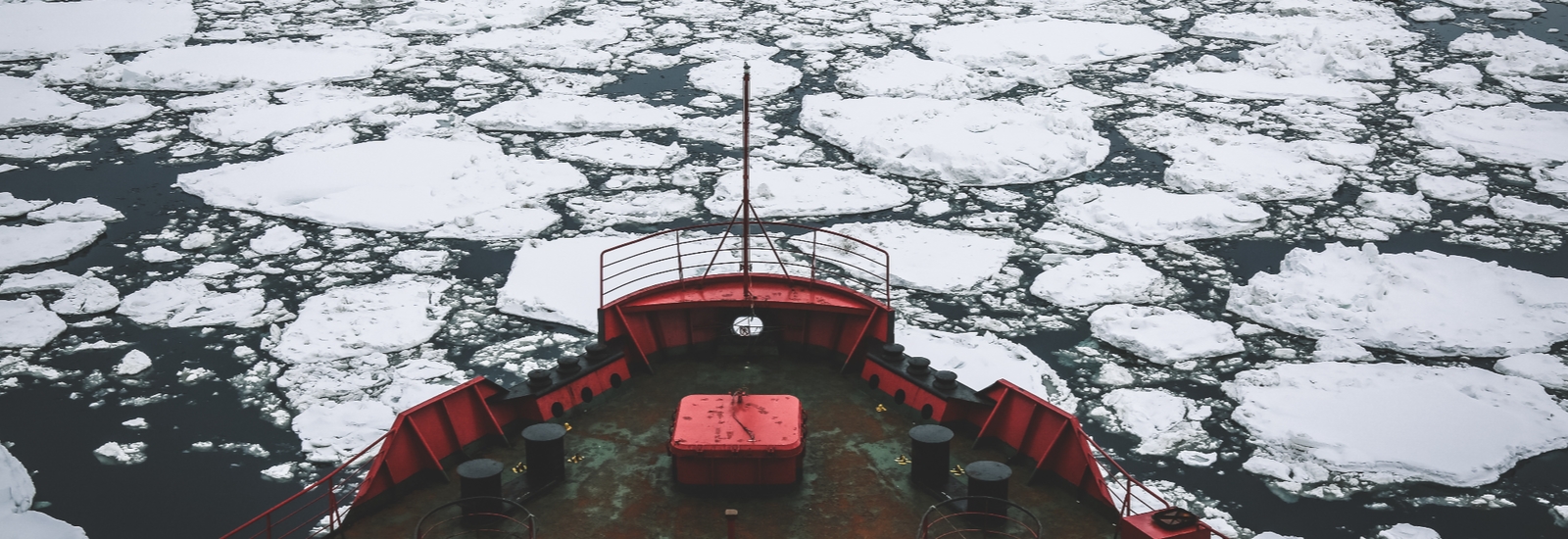The decline of sea ice in the Arctic is undoubtedly one of the most striking signs of climate change, and a worrying environmental concern.
Reading alumnus, Dr Nathanael Melia, shows that this could make shipping through the Arctic a reality by the end of the 21st century, resulting in potential economic benefits.
Dr Melia, a prominent research scientist now based in New Zealand is no stranger to trans-global journeys. He cut his teeth studying climate change during his BSc and master’s programmes at Reading’s Department of Meteorology, but it was with his PhD on trans-Arctic shipping that he began to make waves in the academic community.
“The Arctic is the fastest responding region on the planet to climate change so that was a natural attraction.
“I like to answer the ‘so what, who cares?’ questions, so focusing on the future of shipping through the region makes for a great story!” says Dr Melia, reflecting on the genesis of his PhD project.
Global economic implications
Dr Melia used cutting-edge techniques to project the likelihood of shipping routes opening in the Arctic. The resulting paper, Sea Ice Decline and 21st Century Trans-Arctic Shipping Routes, found that the number of ships that could travel through the Arctic Sea is expected to double over the next 100 years. Access to such routes could potentially save at least 10 days on voyages from Europe to Asia as a result of faster, more direct routes becoming available.
“The reduction in summer sea ice, perhaps the most striking sign of climate change, may also provide economic opportunities.
“There is renewed interest in trans-Arctic shipping because of potentially reduced costs and journey times between Asia and the Atlantic. So far only a few commercial vessels have utilised these routes as they are not currently reliably open.”
The research also found that the length of time these routes will be open increases from currently just a few weeks to a few months, although this would vary considerably from year to year. However, ice-strengthened ships will be able to regularly sail directly across the Arctic for the majority of the year by the end of the century, depending on the level of future greenhouse gas emissions.
Dr Melia’s findings have had considerable impact. Upon completing his PhD, he worked in the Department as a Postdoctoral Research Fellow, working on press articles about his paper for major news outlets such as BBC News and The New York Times.
More recently, he published a follow-up paper, Towards Seasonal Arctic Shipping Route Predictions, and worked on a policy advice document for the UK government on the future of the sea: implications from opening Arctic Sea routes.
Exceptional support
Throughout his PhD and while working as a Postdoctoral Research Fellow, Dr Melia was supported by his mentors Professor Keith Haines and Professor Ed Hawkins, both of whom are based in the Department of Meteorology. Dr Melia remembers his time with the department fondly:
“Other departments can have more of a workplace feel to them, but the Department of Meteorology has a real sense of community.
“Keith and Ed were the best mentors I could have hoped for; they helped guide my research and we spent a huge amount of time discussing paper drafts and redrafts.”
Stay connected
Are you part of the Reading meteorology community – a graduate, student or researcher – and have a story to tell? We’d love to hear your memories. Send them to alumni@reading.ac.uk




